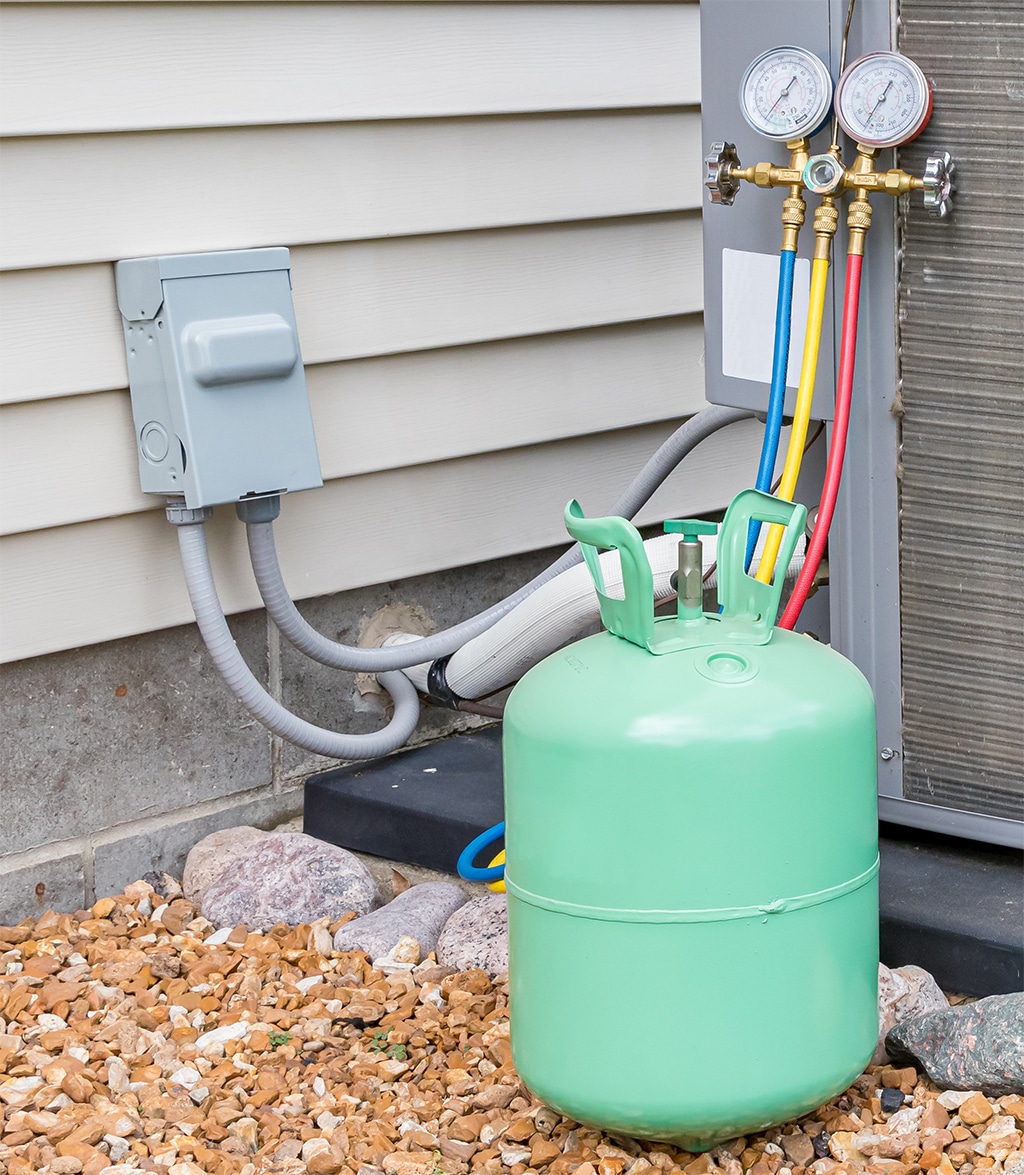
Refrigerant Properties That Air Conditioner Installation Technicians Consider When Recharging Your Unit | Irving, TX
Do you smell a sweet aroma akin to that of chloroform? Did you have an air conditioner installation technician in Irving, TX inspect the refrigerant levels in your air conditioner? There is a chance that you cannot recall. If you have noticed either of the above and need help remembering when your technician came for an air conditioning service, now might be the time to check it.
Refrigerant leaks are the leading cause of various HVAC issues affecting your finances. You should also remember that inhaling refrigerant fumes could harm your health. But did you know that there are ideal factors that every refrigerant should have? If you didn’t, you are at the right place. This article will discuss the properties a good refrigerant should have.
Properties of an Ideal Refrigerant
Should Have a High Latent Heat of Vaporization
A good refrigerant must have a high latent heat of vaporization. This is critical in ensuring a high refrigerating effect while offering a low coolant circulation rate. As a result, the refrigerant can absorb and eject more heat per every refrigeration cycle. You should consult your reliable air conditioner installation technician whenever you want refrigerant levels in your air conditioner checked. They will do their best to select one with the right latent heat regarding vaporization.
It Should Have a Lower Compression Ratio and Higher Suction Gas Density
If the compressor suction has a higher suction gas density, it should have a low-sized compression unit. As a result, the compressor motor will be less powered. After passing via the evaporator, the refrigerant gas’s expansion could be much higher. This means that it has a low fluid-to-gas expansion. This coolant property provides a low compression ratio for the compressor and refrigerant’s higher mass flow rate, resulting in a low circulation rate within the system. This is critical, so you should leave the recharging to a seasoned air conditioner installation technician in Irving, TX.
High Critical Temperature
This is the temperature beyond which the vapor coolant doesn’t condense back into liquid, regardless of whether it has passed through a condenser or another cooling medium and is under any given pressure. This only occurs when a coolant does have a low critical temperature or when the coolant temperature exceeds its critical temperature.
Therefore, it is preferable to have an air conditioner installation technician choose a refrigerant with a high critical temperature. Otherwise, the vapor refrigerant, compressed within the compressor to a hot vapor before passing through the condenser coil, won’t be condensed into a liquid. The refrigerant must have a high latent heat when it comes to vaporization for hot air from the outside to be circulated over condenser coils in the summer to condense the high-temperature gaseous refrigerant into a coolant.
Non-Flammable, Non-Toxic, and Non-Corrosive
A refrigerant shouldn’t be lethal or poisonous to food, human health, or air conditioning. There must be no electrochemical corrosion when in touch with metal components like pipework and compressor. Be able to work with non-metallic components such as nitrile rubber tubes and O-rings that seal various components. The coolant should maintain its non-flammable characteristics while being compressed inside the compressor at high pressure and temperature. Thus, it shouldn’t explode or catch fire outside the system. If a coolant doesn’t have such a property, it might prove dangerous to you and your family. To be safer, always consult an air conditioner installation technician when you suspect refrigerant levels are low.
Moisture inside the system may create extremely corrosive chemicals (typical acids) that might react with metals and other components, such as compressor lubrication oil. Moisture can lead to damage to motor winding insulation, which can short-circuit or ground the motor and result in the compressor valves failing in hermetic compressor cases. Moisture can cause lubricating oil’s characteristics to deteriorate and create metal or other muck, which can clog or choke filters, valves, and other oil passageways. Hence, always ensure that the generated moisture flows via the condensate drain lines into the drain pan. If the condensate drain line is clogged, ensure that the air conditioner installation in Irving, TX technician checks and fixes it during the air conditioning service.
Although a completely moisture-free refrigeration system is not feasible, moisture can enter the system during refrigerant charging, during system repair (i.e., evacuation or vacuuming), when moisture may enter through loose joints, and as free water. Water-based moisture can cause the TXV (thermostatic expansion valve) to freeze inside the evaporator coil and cause icing. Connect a filter dryer that takes moisture from the coolant to prevent moisture buildup.
It Should Be Compatible with the Oil Used for Lubrication
There are high chances of the refrigerant and compressor oil combining inside the compressor, which might lead to the following issues that might result in an AC repair by an experienced air conditioner installation professional. Therefore, the coolant used has to be compatible & miscible with the compressor lubricant.
- Alkalinity in oil decreases due to acidic corrosion.
- A drop-in viscosity that results in insufficient lubrication
- Oil carbonization as a result of temperature increases.
High Latent Heat
What is latent heat? It refers to the amount of heat energy the refrigerant requires to change to a gaseous from a liquid state. Having a high latent heat, the coolant can absorb extra heat from the load. As a result, the refrigeration efficiency of the system increases. Further, it lowers the required mass flow rate and the refrigerant quality. Seasoned air conditioner installation technicians know to choose a coolant having high levels of latent heat as it has more benefits.
Low Boiling Point
The refrigerant can boil out into gas at lower temperatures because of its low boiling point. The refrigerant is liquid when it enters the AC evaporator coils and vapor when it departs. To prevent liquid refrigerant from entering the compressor since it cannot be compressed, the refrigerant must be entirely in vapor form when it leaves the evaporator. Additionally, the low-temperature coolant can readily absorb the heat from the room and transform it into vapor due to its low boiling point coolant feature.
Hence, you’ll be able to maintain a low temperature at home and even lower for commercial systems. Do you need a refrigerant that can effectively cool your Irving, TX home while ensuring that other parts of your system don’t strain? Have an experienced air conditioner installation technician purchase and refill a coolant with a low boiling point in your AC unit.
Low Condensing Pressure
A refrigerant with a low condensing pressure reduces the power a compressor draws during a compression cycle. Hence, they can even run in smaller-sized compressors. As a result, your AC unit’s condenser tubes do not have to deal with high-pressure refrigerants, reducing the design cost and hence the unit’s overall cost. Hence, talk to your air conditioner installation technician if you need a smaller unit.
Easy Leakage Detection
Refrigerant leaks can easily be found by applying soap solution to the connections or using the pressure testing method, which involves applying pressure to the line for twenty to thirty minutes to look for any pressure drops. Though this sounds like something you could do, it is recommended that you leave it to a professional air conditioner installation technician. The technician will place a limited amount of fluorescent dye onto an operating refrigeration system as part of a UV leak detection approach. The system is then scanned with a leak detection light.
The dye appears as a yellow or green solution after escaping the leaky spots. On a refrigerant that contains halogenated hydrocarbons, conduct a halide leak detection test (Freon compounds). It entails holding a flame or a torch not far from the leak. The flame becomes green when a refrigerant leak occurs. The halide torch testing is always performed in a room with good ventilation. For such refrigerant leaks, an electronic detector is currently available. The detector produces a series of quick clicks if the coolant is present. The rate of clicks increases with the refrigerant concentration.
What are Eco-Friendly Refrigerants?
Although there are many refrigerants, most are banned because of their environmental impact. There are two main considerations regarding the environmental impact of AC refrigerants that air conditioner installation technicians in Irving, TX carefully consider the ODP and the GWP. ODP of an eco-friendly refrigerant should be zero. In a similar tune, the GWP of an eco-friendly refrigerant should be as low as possible. Below are some of the eco-friendly refrigerants:
R134a
R134a performs extremely similarly to an R12 and can operate at -28°C and room temperatures of 38°C. However, a synthetic polyester lubricant is required for the compressor. The movement of heat energy to the condenser from the evaporator is essential to an air conditioner. To accomplish this, the compressor moves refrigerant throughout the system, changing its condition as it absorbs and rejects heat. When shopping for a coolant, consult an air conditioner installation technician about replacing your AC unit with an eco-friendly refrigerant.
R410a
R410a is a high-pressure, low-critical-temperature refrigerant primarily utilized in air conditioning compressors. It has been demonstrated to provide performance on par with or better than R407C with a suitable system design. Many air conditioning manufacturers shifted from R22 to R410a, particularly for direct expansion systems where smaller pipe sizes provide an extra benefit. R32 is a potential long-term substitute. Have you replaced your R-22-based unit yet? It might be time to call an air conditioner installation technician in Irving, TX and replace it with one that uses R410a.
An HFC mixture called R404A is specifically made for industrial refrigeration. In low-temperature applications, it outperforms a lot of other HFCs. Additionally, due to its low air compressor temperatures, it can be compressed in a single stage without the requirement for inter-stage cooling. Its high GWP renders it inappropriate for usage in the future, and a quick phase-out is imminent. Replacements for the medium term are R407A & R407F. Many homeowners are spending money by having air conditioner installation technicians replace their units with those using R744 technologies as the long-term fix.
R717 Ammonia
Due to its favorable thermodynamic characteristics and low cost, ammonia is still, without a doubt, the most significant industrial refrigerant in use today. One of the coolants used most frequently in absorption-type air conditioning systems is ammonia. Large amounts of chilly water quickly absorb ammonia fumes.
Strict controls are needed for every industrial application that uses ammonia because of its extreme toxicity and flammability. Ammonia technology is advancing increasingly, as evidenced by low refrigerant-charged packed liquid chillers used in air conditioning. Due to the incompatibility of ammonia with copper and its alloy components, piping used for refrigerant systems must be built of steel or aluminum. Hence, ensure that the air conditioner installation technician considers this when choosing a refrigerant.
Since ammonia is less dense than air, it will mix with the atmosphere if there is a leak. Low amounts of ammonia can be identified by its odor, which is a warning indication. Because ammonia plants are generally considered safe, it is reasonable to anticipate that their use will rise over time as long as refrigerants are used.
R-401b Refrigerant
Except for its increased R-22 percentage, this mix refrigerant is comparable to R-401A. This mixture matches R-12 at -20°F and has a larger capacity at lower temperatures. In terms of temperature matching for air conditioning, it also performs better than R-500. Hence, if you have an R-500-based air conditioning system, it is time to call an air conditioner installation technician to replace it.
As can be noted above, a refrigerant should have many different properties. However, an air conditioner installation technician makes all these considerations before selecting one. Do you want your AC unit recharged? Reach out to us at One Hour Air Conditioning & Heating of Dallas, your reliable air conditioner installation company in Irving, TX.





